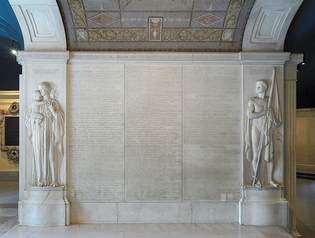
Christopher Gardner
The Republic and the Confederacy
The year 1915 saw the dedication of Yale’s Civil War memorial. It had begun in 1909, with a call from Yale alumni at that year’s Commencement ceremonies to build a memorial in honor of all the Yale men who had fought and died in the Civil War: those who fought for the Union, and those who fought for the Confederacy. The memorial was ensconced in the heart of the campus, the Woolsey Hall rotunda. The names carved on the marble panels weren’t organized by their loyalty. They were organized by class year.
It was the first time a Northern institution of learning had done such a thing. All others built their memorials solely for Union soldiers.
From the start, Yale was explicit about what it was trying to accomplish. William Washington Gordon, a Yale graduate of the Class of 1854, had been a Confederate general—and he was a member of the committee that designed the memorial. I quote his April 12, 1910, note to Talcott Russell in full:
“My understanding of the proposal to erect a memorial at Yale to the Yale men of both armies was that it was to embody and recognize the fact that each was true to his principles and each deserved equal tribute of praise and that Yale University wished to proclaim this fact to the world, that the mingled dust of both armies created a solid foundation for the future of the nation.”
Steven Rome ’20 has been a lead researcher with the Yale and Slavery Working Group.
 loading
loading